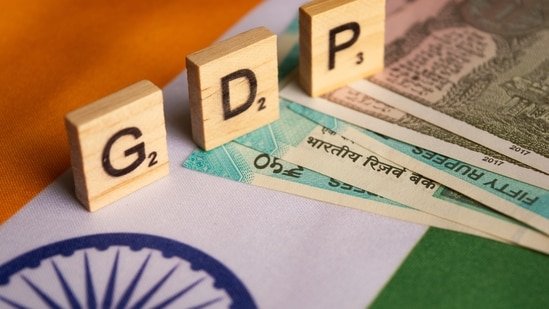
The government is set to finalise a draft roadmap for India to become a $30 trillion economy by the end of 2047. With an expected population of 1.65 billion, this means a per capita GDP of $18,181. Going by the World Bank’s existing threshold of $13,846 Gross National Income per capita for high-income economies, this will put India in the realm of a developed economy.

India’s GDP in dollar terms is also a function of the rupee-dollar exchange rate. This was ₹74.2 against a dollar in 2020 and is expected to be ₹83.9 in 2028, the latest period for which we have forecasts in the World Economic Outlook database of the IMF.
It will be interesting to see what the implied rupee-dollar exchange rate is for 2047 in the vision document. This is important because a lower or higher rate of the rupee’s depreciation — this will depend on both the Indian and global economy — against the dollar can significantly change the required GDP rate at constant prices for the $30 trillion target to materialise. This also means that unless one is privy to the exchange rate assumptions in the blueprint, it will be premature to comment on the feasibility of the target in mind.
Having flagged this fact, it is worth pointing out that the potential for GDP and income growth in absolute terms will increase significantly between now and 2047. To give an example, assuming a 6.5%, 7.5% and 8.5% GDP growth rate between the 2028 IMF forecast and 2047 will lead to an increase of 3.3, 4 and 4.7 times in India’s constant price GDP between these two periods. It is these numbers that explain the importance of putting every effort into maximising India’s growth performance in the medium term. While 6.5% GDP growth is enough to make India the fastest-growing economy in the world, India must target higher growth rates to boost its mass living standards. With the world turning more protectionist and geopolitics becoming unstable by the day, pushing the envelope on growth will not be an easy challenge. This underlines the importance of developing better synergies between the State and the market in India. Any long-term vision document for the Indian economy must do justice to this fact.
 Subscribe today by clicking the link and stay updated with the latest news!” Click here!
Subscribe today by clicking the link and stay updated with the latest news!” Click here!Continue reading with HT Premium Subscription
Daily E Paper I Premium Articles I Brunch E Magazine I Daily Infographics








